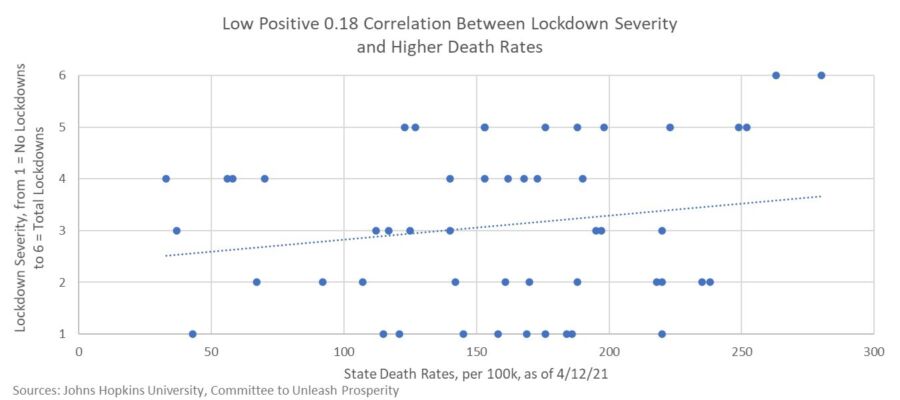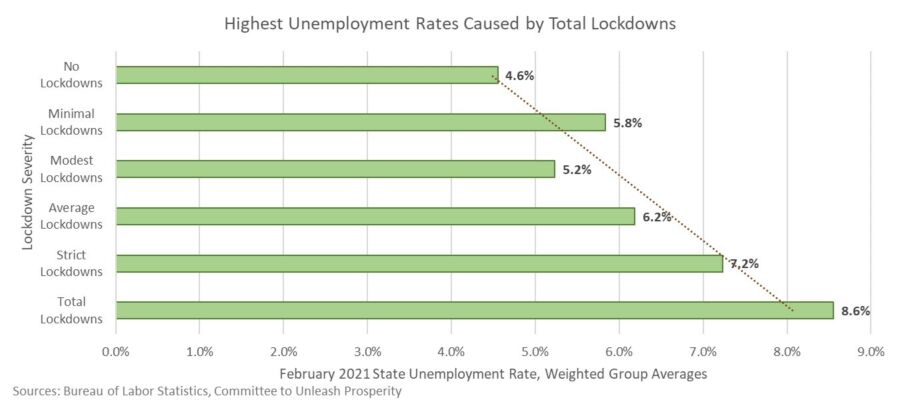A recent Wall Street Journal article highlighted the devastating mental health effects of the pandemic on children. Kids have been subjected to stifling lockdowns even though there has been overwhelming evidence that children are at low to no risk of experiencing severe symptoms or transmitting COVID-19. While the article is certainly correct to emphasize the terrible state of America’s youth, it wrongly places the blame—the pandemic did not do this to our children. Government-imposed lockdowns did.
Isolation has taken its toll on everyone, but most especially the very young and very old.
A study conducted at a pediatric emergency department in Texas found that suicide ideation among 11- to 21-year-olds as well as suicide attempts are up significantly from 2019. Mental health-related emergency department visits for minors jumped 11.3% in the first quarter of 2020 and then another 44.1% through October 2020. Remote learning has negatively affected the mental and emotional health of one in four children.
Instead of normal, healthy human interaction, children have been left to their own devices—literally. These include phones, tablets, gaming consoles, and computers, all of which are poor substitutes for human relationships and interpersonal connections.
But the toll on children goes beyond deteriorating mental health and retrograding social skills. Children are falling behind in the classroom, especially in math. Remote learning and so-called hybrid learning have proved a poor substitute in educating many of the young.
Almost half of parents in a study of low-income families reported experiencing food insecurity. Given the sky-high unemployment caused by government-imposed lockdowns, this is not surprising, especially because low-income earners were more heavily affected by this forced unemployment. Parental angst due to economic issues adds to a child’s already increased anxiety.
Like the isolation imposed on children, the source of the nation’s unemployment also has not been a virus, but government-imposed lockdowns.
The proof of this is the comparison between states that implemented lockdowns and those that did not. The lowest unemployment rates are found in states that have essentially returned to normal, or never imposed restrictions in the first place. The highest unemployment rates are found in states that implemented the harshest lockdowns.
While the tightest lockdowns were all in Democrat-run states, this is not strictly a political issue. Among all Republican trifecta states, (where Republicans control the entire legislature and the governorship) Texas has the worst unemployment, as Texas imposed some of the tightest and longest restrictions. Texas must now catch up to states like South Dakota and Florida, which both returned to normal long before Texas.
Just as unemployment has been highest in states with harsher lockdowns, school closures have been the worst in those same states. And yet, despite the severe costs which the lockdowns have imposed upon children, those lockdowns were seemingly ineffective at slowing the spread and reducing the death rate of COVID-19. (New cases and deaths in Texas are continuing their downward trend since the statewide mask mandate was lifted on March 10.) In fact, the chart below shows a slightly positive, although statistically insignificant, relationship between government-imposed lockdowns and state death rates.

In contrast, there is a strong relationship between the severity of government-imposed lockdowns and both school closures and state unemployment rates. Unsurprisingly, the states that forced businesses and schools to close suffered, and continue to suffer, the highest unemployment.

So, while the government-imposed lockdowns failed to achieve their primary stated objective, those lockdowns succeeded in crashing the best economy in half a century and inflicting our children with low-quality educational experiences and mental-health afflictions. Sadly, even after the government-imposed lockdowns end, children are more likely to have depression and anxiety because of this artificial isolation.
The lockdowns were a mistake, but where do we go from here?
First and foremost, we need to return to normal, and not some kind of Orwellian “new normal.” Families need to be allowed to practice personal responsibility rather than be told how to act by politicians or bureaucrats.
Second, our children will need more mental and emotional support, which starts with healthy and robust families, and is buttressed by private organizations (both for-profit and non-profit) that cater to these family issues at the local level.
Finally, this last year has been a massive case study demonstrating why educational freedom is essential. Giving parents more options in how their children are educated is a powerful way to improve educational outcomes because of the competition that arises when students are not forced to attend a particular school but rather choose one that meets their unique needs.
None of these strategies involve growing government or bureaucracy. In fact, they involve limiting or reducing the roles of governments by strengthening institutions and freeing local communities to help children and families prosper. And given how far many children have fallen behind in the last year, they need all the help we can give them.